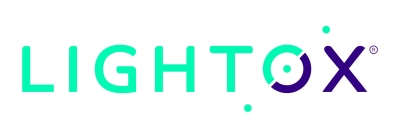Lighting the way out of skin fibrosis I
Radboudumc and LightOx Ltd join forces to develop an innovative approach to develop new light-activated therapeutics to fight skin fibrosis in scleroderma patients. Radboudumc recently developed a revolutionary strategy to eliminate pathogenic skin fibroblasts using targeted photodynamic therapy. This minimally invasive treatment uses light-activated molecules, photosensitisers, which eliminate the targeted cells. LightOx developed next-generation photosensitisers that, with their small size and innovative structure, may greatly improve the biological behaviour of the therapeutic construct.
Scleroderma is a chronic skin disorder where uncontrolled fibrosis leads to extensive scarring and hardening of the skin. In the Netherlands, there are approximately 3.000 scleroderma patients with 19.000 patients reported in the UK. Systemic scleroderma affects an estimated 180.000 patients in Europe. Scleroderma can start at a very young age and leads to progressive joint contractures and invalidity, as there is no treatment available.
Pathogenic fibroblasts that drive tissue damage and inflammation in scleroderma are characterised by a unique marker: fibroblast activation protein-alpha (FAP). The proposed therapy is based on a FAP-targeting antibody, coupled to a photosensitiser that will locally eliminate FAP-expressing cells. After conjugation of the next-generation photosensitisers to the anti-FAP antibody, the construct will be characterised and tested in skin culture models, followed by imaging and therapy studies in a murine scleroderma model.
This APOLLO project will provide further proof-of-concept and will validate this therapeutic approach in a disease-relevant setting, in preparation to bring this treatment to the clinic. If this project is successful, the construct will be further developed into a product for clinical testing. In view of the high morbidity of scleroderma, our proposed therapy will fill a clinical need and drastically improve the quality of life of patients, enabling them to participate more and/or longer in society despite their chronic disease.
In APOLLO-1 the Radboudumc and LightOx together generated a set of therapeutic constructs that we will improve and further test in APOLLO-2. We will adjust the medicines so that they, for example, dissolve better in injection fluids and can be stored for long times. In addition, we will mimic scleroderma skin in the laboratory and investigate whether our treatment cures fibrosis.
Interested in APOLLO-2? Read the project here.


